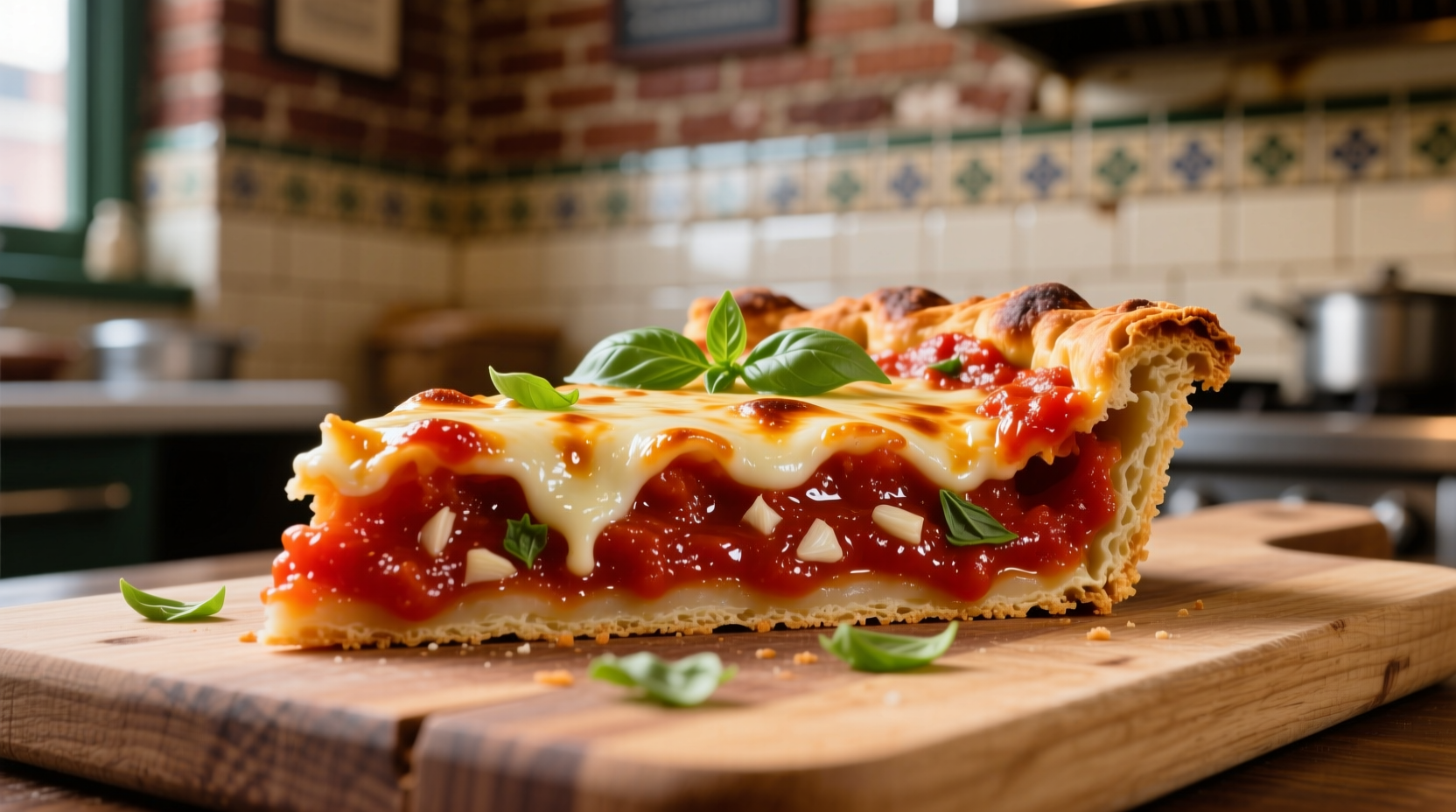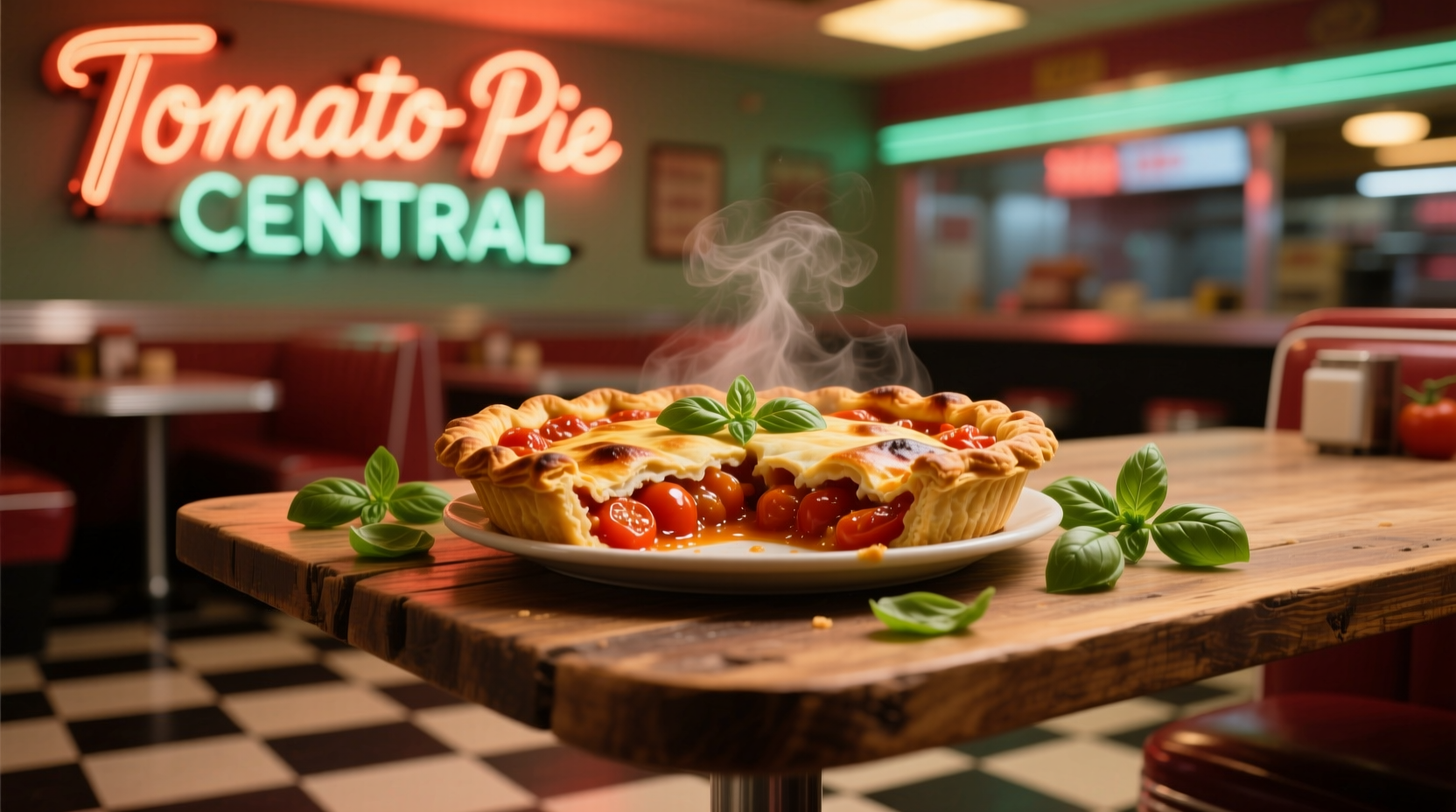The Philadelphia Tomato Pie Tradition: More Than Just Pizza
When you ask Philadelphians about "tomato pie," don't expect a dessert dish. In this city, tomato pie represents a specific regional pizza style with deep cultural roots. Unlike standard pizza where sauce sits beneath cheese, Philadelphia tomato pie features a generous layer of uncooked tomato sauce spread directly over the cheese after baking. This creates a distinctive flavor profile with brighter, fresher tomato notes that haven't been cooked down.
Tomato Pie Central has become synonymous with this tradition, preserving techniques that Italian immigrants brought to South Philadelphia over a century ago. The establishment maintains the original approach where pizzerias would sell day-old slices at discounted prices, creating what locals simply called "tomato pie" to distinguish it from regular pizza.
Understanding the Tomato Pie Central Experience
Visiting Tomato Pie Central means stepping into Philadelphia's culinary history. The no-frills environment reflects the working-class origins of this food tradition. You won't find table service or fancy decor—just authentic, square-cut slices served from a steam table behind glass.
What makes their version stand out? The perfect balance of:
- Thick, slightly chewy crust with characteristic corner crispiness
- Generous layer of high-quality mozzarella that melts into the dough
- Rich tomato sauce made from San Marzano tomatoes, applied after baking
- Optional toppings added before the final sauce layer
| Regional Pizza Style | Crust Characteristics | Sauce Application | Signature Feature |
|---|---|---|---|
| Philadelphia Tomato Pie | Thick, square-cut, chewy with crispy corners | Applied after baking over cheese | Bright, uncooked tomato flavor |
| New York Style | Thin, foldable, hand-tossed | Under cheese before baking | Large, foldable slices |
| Chicago Deep Dish | Thick, buttery, pan-baked crust | Under cheese before baking | Meat and cheese layers beneath sauce |
| Sicilian Style | Thick, rectangular, airy interior | Under cheese before baking | Garlic-infused olive oil crust |
Tomato Pie Central's Place in Philadelphia's Food Timeline
The story of tomato pie in Philadelphia dates back to the early 1900s when Italian immigrants established bakeries that doubled as pizzerias. These establishments would sell "tomato pie" as an affordable lunch option to factory workers. Historical records from the Philadelphia Historical Society document how these bakeries operated, with tomato pie being sold by the slice from glass-enclosed counters.
Tomato Pie Central emerged during the mid-20th century as dedicated pizzerias began specializing in this regional specialty. Unlike traditional pizzerias that served round pies, establishments like Tomato Pie Central focused exclusively on the square-cut, sauce-on-top style that had developed in South Philadelphia's Italian neighborhoods.

What to Expect When Visiting
Tomato Pie Central maintains the traditional approach to serving this regional specialty. Here's what visitors should know:
Location Context
Located in the heart of South Philadelphia's historic Italian neighborhood, the establishment sits within the cultural corridor where tomato pie tradition developed. Unlike tourist-focused pizza places in Center City, Tomato Pie Central remains embedded in the community where this style originated.
Menu Highlights
The menu stays true to tradition with minimal variations:
- Classic Tomato Pie - The signature square slice with cheese and uncooked tomato sauce
- Pepperoni Pie - Traditional topping added before the final sauce layer
- Plain Cheese - For those who prefer to add their own sauce
- Italian Hoagie - A nod to Philadelphia's other iconic food tradition
Practical Visitor Information
Before visiting Tomato Pie Central, understand these context boundaries:
- Hours: Typically open Tuesday-Saturday, 10am-8pm (closed Sundays and Mondays)
- Payment: Cash-only establishment reflecting its working-class roots
- Seating: Limited counter seating only - primarily takeout
- Best Time to Visit: Mid-morning or early afternoon to avoid lunch rush
- Price Point: $3-4 per slice, maintaining affordability as in the tradition's origins
Why Tomato Pie Central Matters to Philadelphia Food Culture
Tomato Pie Central represents more than just a place to eat—it preserves a culinary tradition that defines Philadelphia's food identity. According to food historians at Drexel University's Center for Food and Hospitality Management, establishments like Tomato Pie Central serve as "living museums" of regional foodways that might otherwise disappear.
The significance lies in how it maintains authenticity while larger chains have adapted the style for broader appeal. True Philadelphia tomato pie requires specific techniques that Tomato Pie Central continues to follow:
- Using uncooked tomato sauce applied after baking
- Maintaining the square-cut, thick-crust format
- Preserving the casual, no-frills service style
- Staying within the neighborhood where the tradition developed
When you visit Tomato Pie Central, you're experiencing food history that connects directly to Philadelphia's Italian immigrant communities of the early 20th century—a culinary tradition that has remained remarkably consistent while other regional pizza styles have evolved significantly.











 浙公网安备
33010002000092号
浙公网安备
33010002000092号 浙B2-20120091-4
浙B2-20120091-4